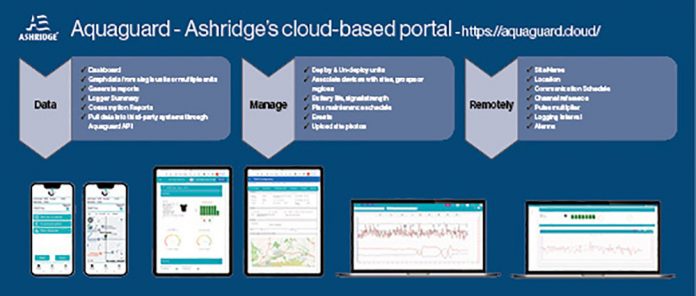A challenge with any battery-powered devices used to monitor flow, pressure or acoustics in the water network is the CAPEX and then the OPEX costs needed to maintain the fleet.
A data logger has one job: recording and transmitting data at regular intervals. These intervals are getting less and less, traditionally this started once a day, however, the expectation is now to send data every 15 minutes. To do this with traditional technology such as 2G (also known as GPRS), you would need an external battery pack to get the datalogger battery to last the 5 years, this is where NB-IoT is a game changer.
First, a little bit of information if you have not heard about NB-IoT or Narrowband Internet of Things. NB-IoT is one of the low-powered wide-area networks or LPWAN for short. NB-IoT operates in the guard bands of cellular networks and is part of the 3GPP standard. It provides many benefits for battery-powered devices, such as data loggers requiring low bandwidth connectivity in a fixed location.
So, what are the benefits of NB-IoT?
- Battery life – NB-IoT uses PSM or Power Saving Mode which enables a battery-powered device to send data for up to 10 years on a single battery (dependent on coverage class).
- Signal coverage – NB-IoT offers enhanced coverage in comparison to traditional GPRS or 2G networks and this can be up to 10 times the area covered.
- Signal penetration – NB-IoT provides enhanced signal penetration in enclosed areas such as chamber lids and underground assets.
- Scalability – NB-IoT can provide coverage for hundreds of millions of devices, perfect for mass deployments.
- Security – NB-IoT uses licensed cellular spectrum which is much more secure than other types of LPWAN technologies.
With all this in mind, Ashridge Engineering Limited in Devon decided to base its next product, the Chariot, on using NB-IoT as its communication method. The Chariot is an NB-IoT-enabled data logger that also has LTE-M as a backup. The CharIoT can operate for up to 10 years in the field without any intervention from operational teams. The costs associated with deploying and managing data loggers can be significant, so making a product that solved these problems, was the backbone of Ashridge’s Chariot development roadmap.
There are three versions in the Chariot range:
1. Chariot Flow
2. Chariot Flow and Pressure
3. Chariot Flow and Dual Pressure
No longer do your operatives need to carry a laptop when deploying Chariots in the field. Ashridge developed an Android app that uses NFC also known as Near Field Communications. NFC is used in everyday life to pay for goods and services, we have taken this technology and implemented it into the Chariot. Through the Chariot app, you can configure:
- Site ID and device location
- Communication frequency
- Flow Channel
- Pressure Channel and zero transducer to atmospheric pressure
- Complete a signal test
- Carry out a test read
The Chariot can be set up in under 2 minutes allowing for faster deployment and enhancing the speed of the rollout. Whether you are looking for a “lift and shift” deployment or a permanent installation, the Chariot is a perfect solution.
All Chariot data is transmitted into Aquaguard, Ashridge’s cloud portal where remote configuration changes can be made if needed. The data can also be pulled into third-party systems through the Aquaguard API.
The demand for more and more data from water utilities is only going to increase as we move forward into AMP 8 and AMP 9, Chariot can help water utilities solve the data challenges of the future with greater return on investment.
www.ash-eng.com



